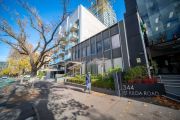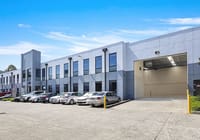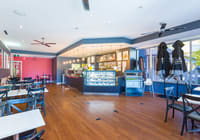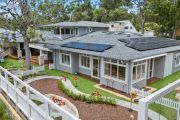
Queensland's commercial property market grows faster than Sydney and Melbourne in 2017
Queensland is back on the radar for commercial property investors, with new data showing the growth in sales in the Sunshine State in 2017 outstripped that of NSW and Victoria.
Total sales in Queensland shot up 68 per cent year-on-year to $7.2 billion in 2017, Cushman and Wakefield research shows.
This is compared with a 25-per-cent improvement in NSW and an 8-per-cent decline in Victoria.
Dominic Brown, the firm’s Australia and New Zealand head of research, said the result in Victoria was coming off an “abnormally high” base from 2016 in the “other” category, which includes hotels.
Most of Queensland’s growth was accounted for by the office sector, where transaction volume almost doubled to nearly $3 billion, though office demand was still the strongest in NSW with sales at $8 billion.
Dr Brown said Brisbane was presenting a more affordable alternative for investors than Sydney and Melbourne.
“Obviously up in Queensland, the pricing hasn’t been going quite as hard, so investors are looking at that yield spread between the Melbourne and Sydney markets and then the Brisbane markets,” Dr Brown told Commercial Real Estate.
“You combine that with the view that the office market (in Queensland) has turned the corner, it’s got through the bottom of the tenant-demand cycle and is starting to pick up.”
Nationally, 742 recorded transactions in the commercial real estate market reaped in $34.1 billion, with a third of that coming from deals closed between October and December 2017, Cushman and Wakefield’s Australia Investment MarketBeat Q4 2017 found.
That figure was up 14 per cent from 2016, and inches close to the record high of $34.8 billion in 2014. Meanwhile, the average deal size shrunk to $46 million.
“In 2017 we saw a lot more activity in the $500 million to $1 billion price range – something that was largely absent over the past couple of years,” Dr Brown said.
“While smaller deal volume increased, the lack of $1 billion-plus national portfolios transactions for the second year running has reduced average deal size.”
Foreign investors splashed $12.2 billion on commercial property in the past 12 months, accounting for 36 per cent of the pie. Singapore came out on top as the biggest offshore investor, pumping in $4.5 billion, followed by China at $1.5 billion.
Despite this, domestic investment surged 22 per cent from 2016 to $22 billion – a post-global financial crisis record.
Cushman and Wakefield’s head of capital markets James Quigley pointed out that the $22 billion coming from within the country made up almost three quarters of the national total.
“There is no shortage of interest in Australian assets from offshore investors and we expect them to maintain their focus on Australia in 2018,” he said.
“However, domestic investors, especially the wholesale funds and AREITs (Australian real estate investment trusts), have been very active over the year.”
Looking ahead
In 2018 investors pursuing higher returns are likely to look at core-plus markets, which are secondary in quality to core assets, and alternative asset classes, including data centres, student accommodation, retirement living and medical-related properties.
“The competition to secure office assets is very strong at the moment, pricing is very high as well, so in order to either lessen the competition or seek higher returns, we’re expecting investors to diversify their focus,” Dr Brown said.
“That can be diversifying their focus geographically, so more looking at Queensland, possibly Adelaide, and Western Australia might begin to gather a bit more attention. Or you can diversify by looking at different sectors.
“This will be the interesting element of 2018: we’re going to have investors active all along the risk curve.”
Dr Brown added that his team has recorded a preliminary figure of $560 million in deals in 2018 to date.
“If it continues like this, then it will suggest that we’re going to be in for a fairly buoyant first half of the year.”













